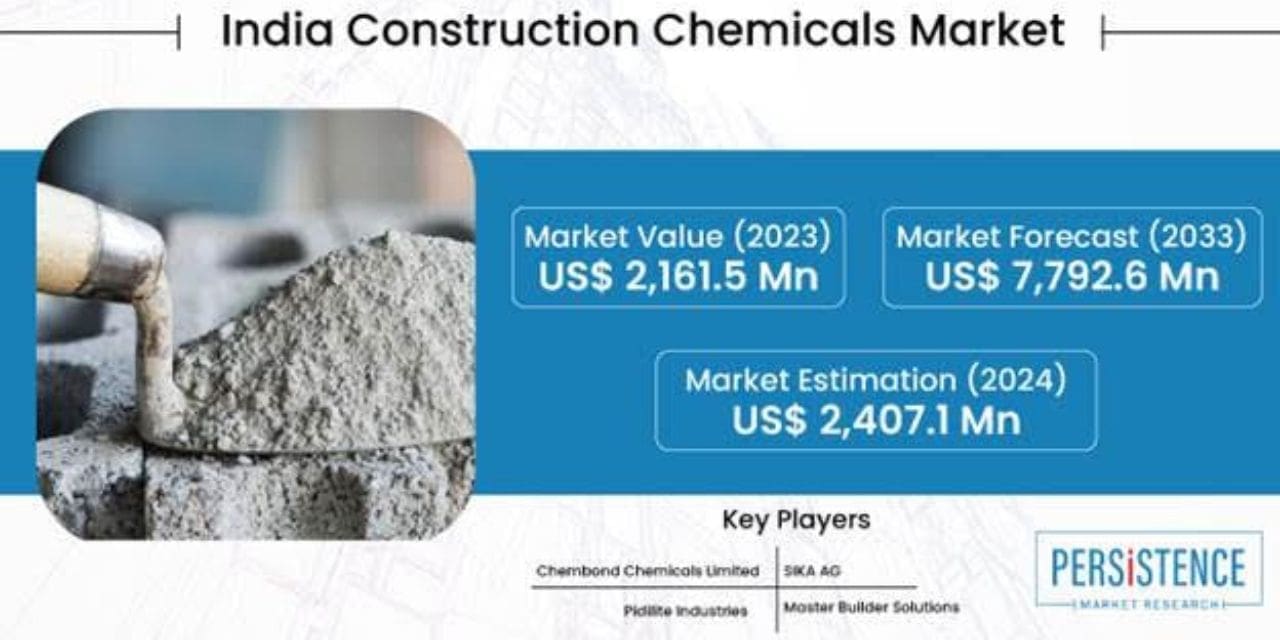The construction industry is experiencing a transformative phase, driven by advances in construction chemical technology. As we navigate through 2024, it’s clear that innovations in this sector are setting new standards for performance, sustainability, and efficiency. This blog delves into the most significant advancements in construction chemical technology this year, exploring how these developments are reshaping the industry.
Sustainable and Eco-Friendly Chemicals
Chemical technology is no different from other construction fields in that sustainability is still a major concern. 2024 has seen a greater focus on environmentally friendly solutions, which has resulted in the creation of numerous cutting-edge products:
Bio-Based Admixtures: Plant extracts and agricultural byproducts are two renewable sources that are the basis of a new generation of bio-based admixtures that are becoming more and more popular. These additives improve the strength and durability of concrete while also lowering its carbon impact.
Low-VOC and Zero-VOC Products: The development of low-VOC (Volatile Organic Compounds) and zero-VOC (Volatile Organic Compounds) adhesives, sealants, and coatings is a result of the movement toward healthier indoor environments. These devices are perfect for use in both residential and commercial buildings since they reduce harmful emissions and enhance air quality.
Enhanced Concrete Performance
Concrete remains a cornerstone of construction, and innovations in chemical technology are continually enhancing its performance. In 2024, several key advancements stand out:
- High-Performance Superplasticizers: New formulations of superplasticizers are improving the workability and strength of concrete. These advanced admixtures allow for lower water content while maintaining or even enhancing the flowability and strength of the mix.
- Self-Healing Concrete: The concept of self-healing concrete has moved beyond the research phase and is now being implemented in real-world applications. New self-healing technologies incorporate bacteria or capsules containing healing agents that activate when cracks form, automatically repairing minor damages and extending the lifespan of concrete structures.
- Nanotechnology in Concrete: Nanotechnology is making waves in concrete chemistry. Nano-silica and nano-titanium dioxide are being used to enhance the mechanical properties, durability, and resistance to environmental factors like UV radiation and chemical attacks.
Smart and Intelligent Coatings
The advent of smart coatings is revolutionizing how we approach maintenance and protection in construction:
- Self-Cleaning Coatings: Using photocatalytic materials like titanium dioxide, self-cleaning coatings are now available that use sunlight to break down dirt and pollutants on building surfaces. This technology reduces the need for frequent cleaning and maintenance, ultimately extending the lifespan of exterior surfaces.
- Thermochromic and Photochromic Coatings: These innovative coatings change color in response to temperature (thermochromic) or light (photochromic) changes. They offer potential benefits for thermal regulation and aesthetic customization in buildings.
- Sensor-Embedded Coatings: The integration of sensors into coatings allows for real-time monitoring of structural health. These sensors can detect stress, moisture levels, and temperature changes, providing valuable data for predictive maintenance and ensuring the longevity of structures.
Advanced Sealants and Adhesives
Sealants and adhesives play a crucial role in ensuring structural integrity and efficiency. In 2024, several advancements are improving their performance:
- Hybrid Sealants: Hybrid sealants, combining properties of silicones and polyurethanes, are offering enhanced adhesion, flexibility, and resistance to weathering. These sealants are suitable for a wide range of applications, including joints, seams, and glazing.
- Fast-Curing Adhesives: New formulations of fast-curing adhesives are reducing construction time by significantly decreasing setting and curing times. These adhesives are particularly useful in high-traffic areas or projects with tight deadlines.
- Fire-Resistant Sealants: The development of fire-resistant sealants that can withstand extreme temperatures without degrading is enhancing safety in buildings. These sealants are critical for maintaining fire barriers and preventing the spread of flames and smoke.
Green Chemistry and Circular Economy
The principles of green chemistry and circular economy are increasingly influencing the development of construction chemicals:
- Cradle-to-Cradle Design: Chemicals and materials designed with cradle-to-cradle principles ensure that they can be fully recycled or safely returned to the environment. This approach minimizes waste and promotes the use of materials that do not deplete natural resources.
- Closed-Loop Systems: Advances in chemical technology are enabling the creation of closed-loop systems where waste products are reprocessed and reused in the production of new materials. This not only reduces waste but also lowers production costs and resource consumption.
- Carbon Capture and Utilization: Emerging technologies are focusing on capturing carbon dioxide from industrial processes and using it in the production of construction chemicals. This approach not only mitigates greenhouse gas emissions but also creates valuable materials for construction.
Digital Integration and Automation
The integration of digital technology and automation is streamlining the use of construction chemicals:
- Automated Mixing and Dispensing Systems: Automation in mixing and dispensing construction chemicals ensures consistent quality and precision. These systems reduce human error and improve efficiency in large-scale projects.
- Data-Driven Optimization: Advanced software and data analytics are being used to optimize the formulation and application of construction chemicals. Real-time data helps in adjusting mixtures and application processes for better performance and cost-effectiveness.
- IoT-Enabled Solutions: The Internet of Things (IoT) is facilitating smart construction practices by connecting chemical application systems to centralized control units. This connectivity allows for real-time monitoring and adjustments based on environmental conditions and project requirements.
Conclusion
The construction chemical technology landscape in 2024 is marked by significant advancements that enhance sustainability, performance, and efficiency. From eco-friendly materials and self-healing concrete to smart coatings and digital integration, these innovations are reshaping the industry and setting new benchmarks for future developments. As the construction sector continues to evolve, these cutting-edge technologies will play a pivotal role in addressing global challenges and driving progress in the built environment.
Read More: https://www.persistencemarketresearch.com/market-research/india-construction-chemicals-market.asp

